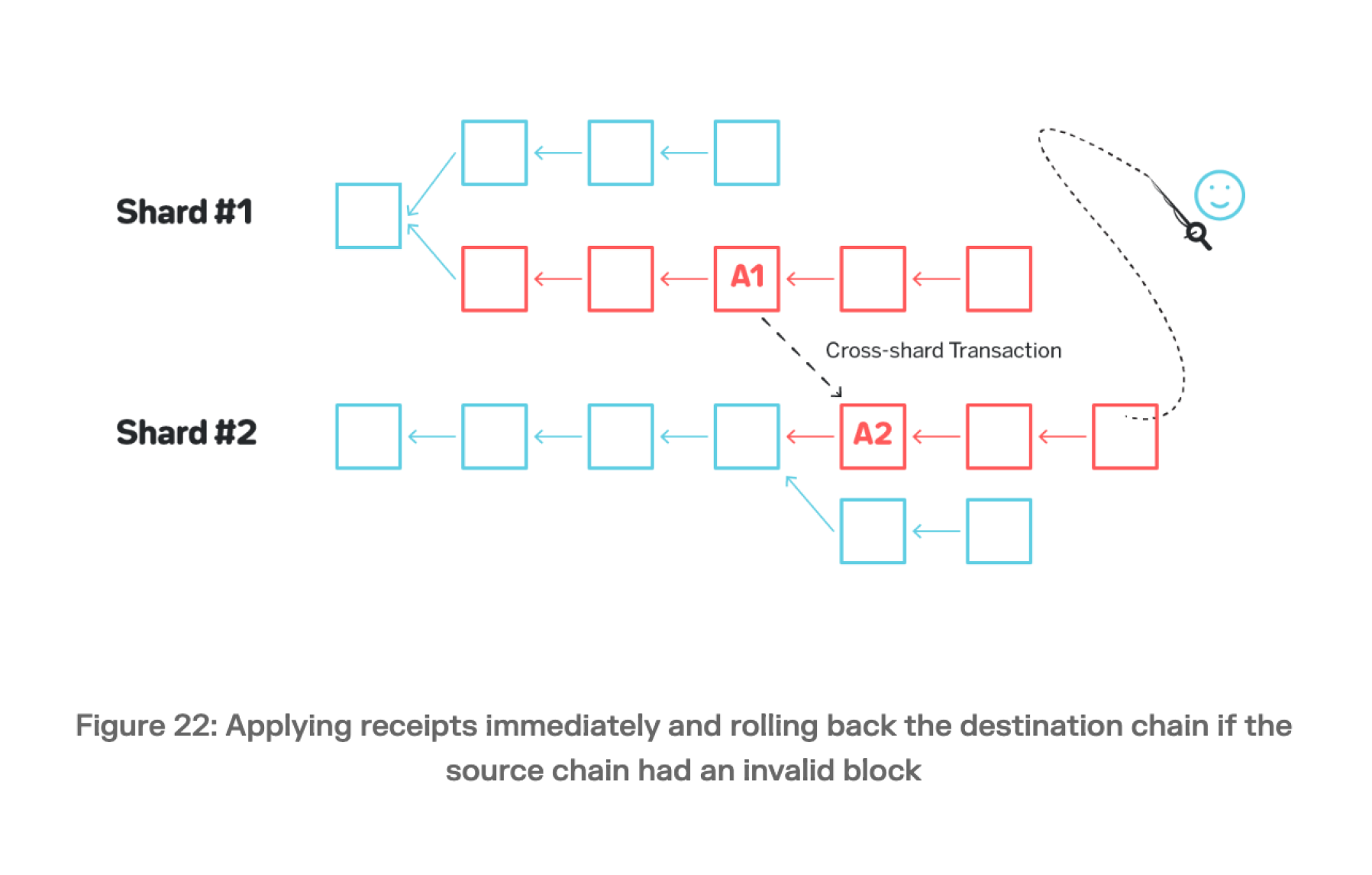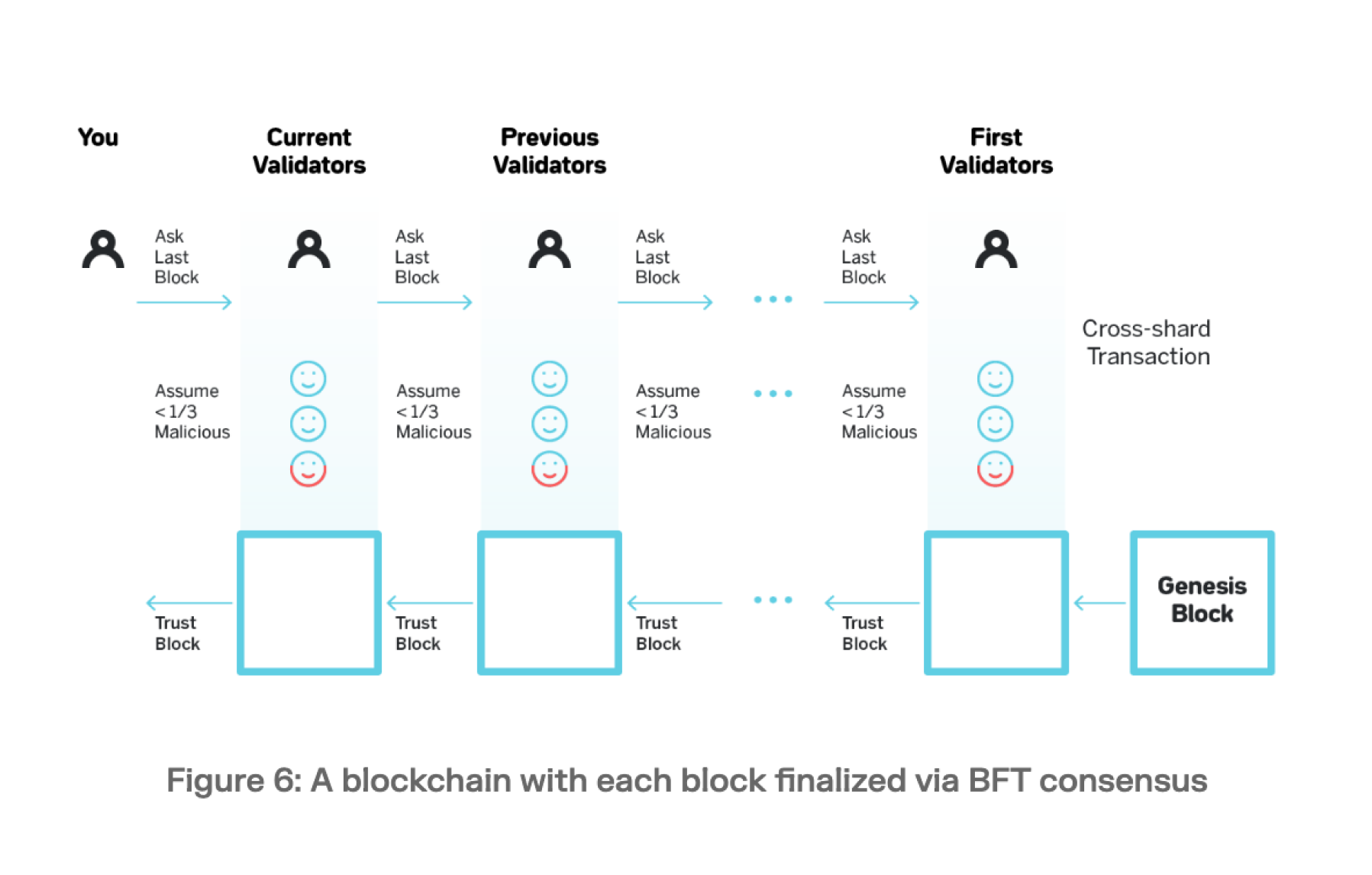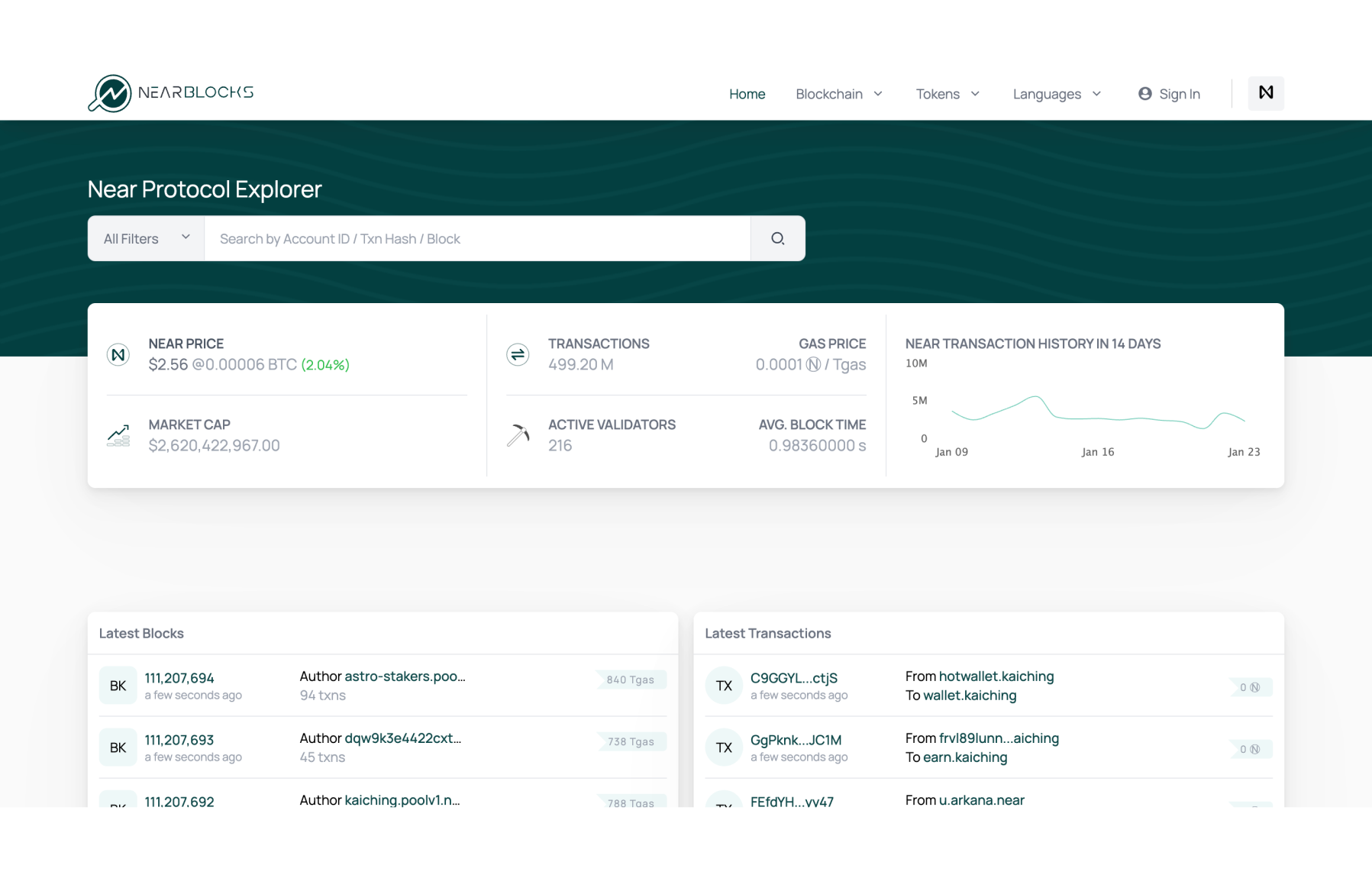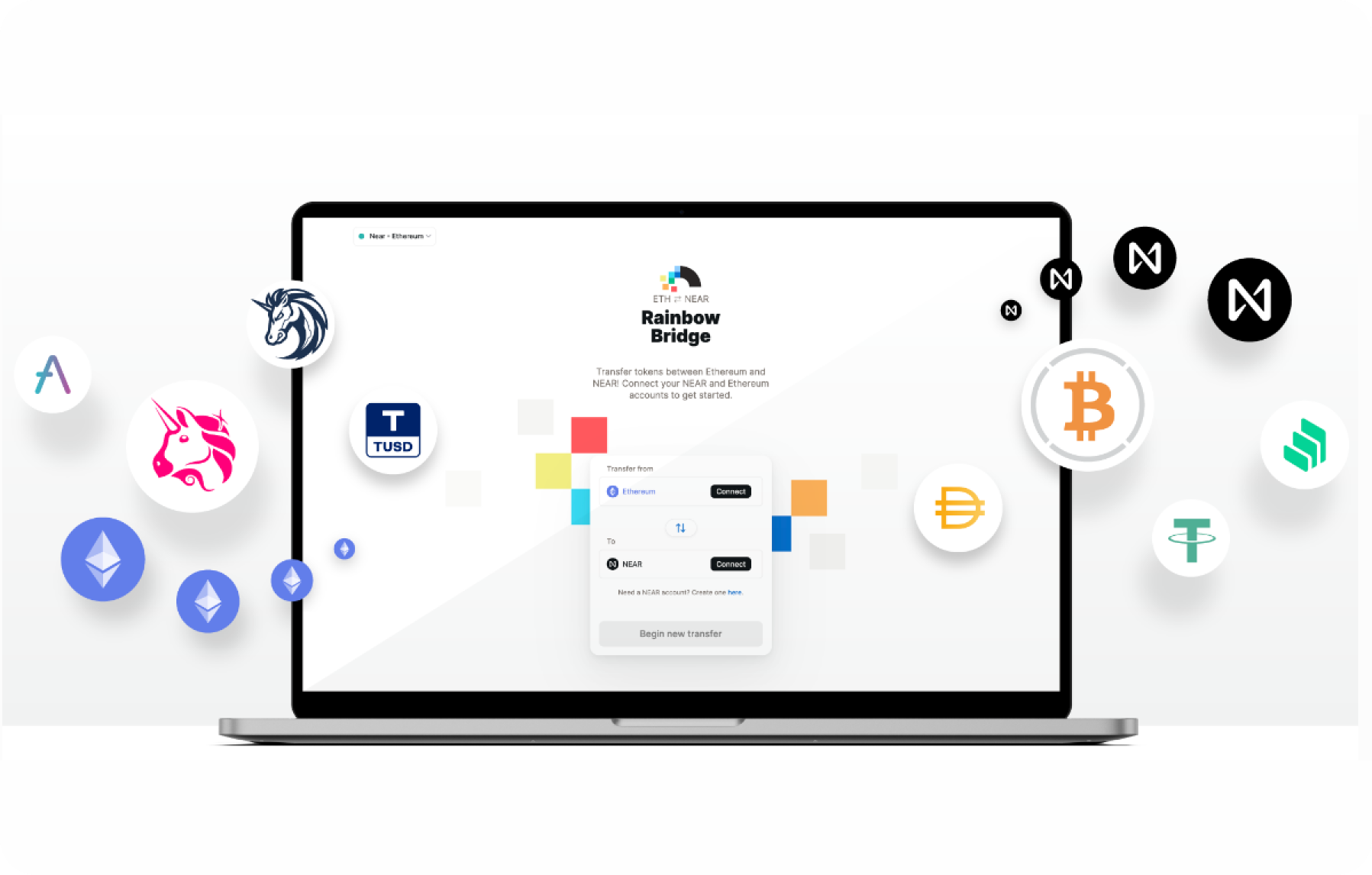NEAR Protocol Ecosystem Review
Key Insights
- A deep look into the scalable, secure, and user friendly NEAR Protocol
- NEAR Protocol is using Nightshade as a consensus algorithm aimed at providing security and decentralisation
- An overview of sharding and custom smart-contracts in the NEAR Protocol
NEAR Protocol is a blockchain platform designed with a focus on scalability, security, and usability. It is a useful infrastructure that aims to provide an efficient means of creating decentralized applications and smart contracts.
NEAR Protocol: Blockchain for a New Era
NEAR Protocol is a virtual infrastructure that offers an extensive set of tools for developers and users. At the centre of this infrastructure is the pursuit of three core principles.
- Scalability
NEAR is based on the concept of Sharding, which allows a distributed network to process multiple transactions in parallel. This solution aims to increase throughput and ensure efficient operation even as the number of decentralized applications and users on the network grows.
- Security
NEAR Protocol applies advanced fragment signature technology to enhance security. This mechanism allows participants to sign only those pieces of data necessary for specific transactions, minimising risk and ensuring network integrity.
- Usability
NEAR focuses not only on complexity and security but also on usability for developers and end-users. The NEAR SDK provides intuitive development tools that make the creation of decentralized applications more accessible, supporting the drive towards mass adoption of blockchain technology.
Nightshade algorithm in NEAR Protocol
- Fragment Signature Technology
NEAR Protocol utilizes Fragment Signing Technology, an innovative method for securing transactions. Instead of signing the entire transaction, participants sign only fragments of data that contain the necessary information to verify a specific transaction. This approach ensures efficient resource utilisation and reduces the risk of sensitive information leakage.
- Nightshade consensus algorithm
It is designed to provide security and decentralization in the NEAR Protocol network. Nightshade is a consensus algorithm that combines the principles of sharding and consensus mechanisms to provide efficient transaction processing.
- Sharding
Nightshade implements sharding by dividing the network into separate fragments (shards), with each processing a different set of transactions. This increases network throughput and efficiency.

Credits: https://near.org/papers/nightshade
Nightshade uses a combined consensus approach that incorporates BFT (Byzantine Fault Tolerance) and DAG (Directed Acyclic Graph) methodology, providing a high level of security and resilience against malicious attacks.
Byzantine Fault Tolerance (BFT) refers to a computer system's ability to continue functioning even if some of its nodes fail or act maliciously.
A Directed Acyclic Graph (DAG) is a directed graph without cycles connecting the other edges. The edges of the directed graph only go one way.
Nightshade is optimised for efficient use of network participants' resources. Reducing transaction processing time and minimizing energy consumption ensures network resilience as activity increases.
Nightshade supports decentralization by distributing transaction management between different shards. This prevents centralization and ensures that all nodes participate equally in the decision making process.
Through a combination of BFT consensus and DAG structure, Nightshade minimizes the energy consumption that may occur during transaction processing. This makes the network more resilient and environmentally efficient.
Sharding and Scalability in NEAR Protocol
What is Sharding
Sharding is a technique used in NEAR Protocol to scale blockchains. It involves dividing the network into fragments called shards, each of which is an independent part of the blockchain that handles its own set of transactions and smart contracts. This reduces the load on each network node and enables parallel processing of multiple transactions.

Credits: https://near.org/papers/nightshade
The sharding process in NEAR is similar to dividing a database into separate servers, each processing its own data. However, in the context of blockchain, each shard contains a portion of a shared registry, and modifications made to one shard can impact the state of others. This is accomplished through consensus protocols and validation mechanisms.
Benefits of Cross-Shard Transaction Processing
The aim of cross-shard transaction processing across shards is to increase the overall throughput of the blockchain.
This is achieved by allowing each shard to process its transactions in parallel, resulting in a higher total system throughput. This is particularly important during periods of high network activity. Additionally, transaction processing time is reduced due to the independent operation of different parts of the network. To ensure higher network responsiveness and reduce transaction confirmation time, it is important to implement efficient resource utilization through sharding.
Sharding allows for better load balancing among network nodes, with each node processing only the information relevant to its shard. This contributes to more efficient resource utilization and enables horizontal scaling of the blockchain. As the network expands, new shards can be added to support increasing activity and allow the system to scale.
Sharding is a key technological innovation in NEAR Protocol that addresses scalability issues and improves blockchain network efficiency.
Custom Smart-contracts in NEAR Protocol
The capacity to generate bespoke contracts in NEAR unlocks a range of possibilities. Developers can create custom smart contracts that are tailored to their specific requirements, thereby enhancing the flexibility and versatility of the platform for various use cases. Programming languages like JavaScript and Rust can be utilised by developers to actualise their ideas and goals.
- Adaptive Transaction Pricing
Adaptive Pricing in NEAR Protocol is a mechanism that dynamically changes the cost of transactions based on the current network load. This mechanism aims to balance cost predictability with network efficiency.
- Dynamic Regulation
The adaptive pricing algorithm analyses the current network load and adjusts the transaction cost in real time. Prices can decrease when load is low and increase when load is high.
NEAR Protocol Explorer
NEAR Explorer is a web-based tool that provides a comprehensive overview of the NEAR blockchain. It includes information about transactions, blocks, and accounts, allowing users to monitor network activity, check transaction status, and analyze data.

This tool is valuable for developers and researchers alike. Developers can use NEAR Explorer to debug smart contracts, monitor activity, and study the overall health of the blockchain. Researchers can analyze transactions, network dynamics, and identify trends.
NEAR SDKs
The NEAR Software Development Kits (SDKs) offer developers a range of tools and libraries to create decentralised applications on the NEAR platform.
These tools include those for network interaction, smart contract creation, and frontend development. The NEAR JavaScript SDK and the NEAR Rust SDK are examples of SDKs that can be used. The JavaScript SDK simplifies web development, while the Rust SDK provides tools for creating smart contracts. Both SDKs empower developers and streamline the development process.
NEAR Foundation
How a non-profit organisation impacts ecosystem development? The NEAR Foundation funds and supports projects that advance the NEAR blockchain ecosystem. It also conducts educational programmes and supports initiatives that contribute to the growth and sustainability of the network.
The foundation supports various projects and initiatives. The NEAR Foundation supports infrastructure improvements, educational programmes, and research to increase the resilience and innovation of the NEAR ecosystem.
ETH-NEAR Rainbow Bridge
The NEAR Rainbow Bridge is a project that provides a bridge between the NEAR Protocol and Ethereum blockchains, enabling the movement of assets and tokens between both networks and facilitating integration and resource sharing.
Rainbow Bridge enables users to transfer tokens between NEAR Protocol and Ethereum, including tokens issued on one network for use on the other.

Credits: https://near.org/bridge
The project aims to create a bridge that promotes interoperability between NEAR and Ethereum, unlocking new opportunities for dApps and projects on both platforms.
NEAR is a cryptocurrency used in the NEAR Protocol. The NEAR coin serves several important functions in the ecosystem, including transaction fuel and smart contract execution.
It is used to pay transaction fees for executing smart contracts, sending tokens, and other transactions on the NEAR Protocol network. Additionally, NEAR token holders can participate in the staking process, which grants them the right to participate in decision-making and secure the network through the Proof-of-Stake (PoS) mechanism.
Users can get NEAR on SimpleSwap.
Proof-of-Stake (PoS) is a consensus mechanism used in cryptocurrencies to process transactions and create new blocks in a blockchain.
- Voting for protocol improvements
NEAR holders can use their tokens to vote for suggestions and protocol improvements, which promotes democratic governance and network development.
- Ecosystem support
NEAR coins can also be used to support projects and initiatives in the NEAR protocol ecosystem, including participating in award staking and supporting various decentralized applications.
NEAR crypto is an important element in the NEAR Protocol ecosystem, providing functionality and incentives to users, developers and stakers within this blockchain platform. Users can get NEAR on SimpleSwap.
Summary
NEAR Protocol is a scalable, secure, and user-friendly virtual infrastructure. To achieve greater security and decentralization, NEAR Protocol uses the Nightshade consensus algorithm, which combines sharding and consensus protocols. This combination enables increased network throughput and efficient transactions.
The NEAR ecosystem comprises NEAR Explorer, a tool for tracking transactions and the blockchain, NEAR Software Development Kits (SDKs), NEAR Rainbow Bridge, a bridge connecting the NEAR Protocol and Ethereum blockchains, and the non-profit organization NEAR Foundation.
Users can exchange all cryptocurrencies mentioned in this article for fiat or crypto on SimpleSwap.
The information in this article is not a piece of financial advice or any other advice of any kind. The reader should be aware of the risks involved in trading cryptocurrencies and make their own informed decisions. SimpleSwap is not responsible for any losses incurred due to such risks. For details, please see our Terms of Service.


